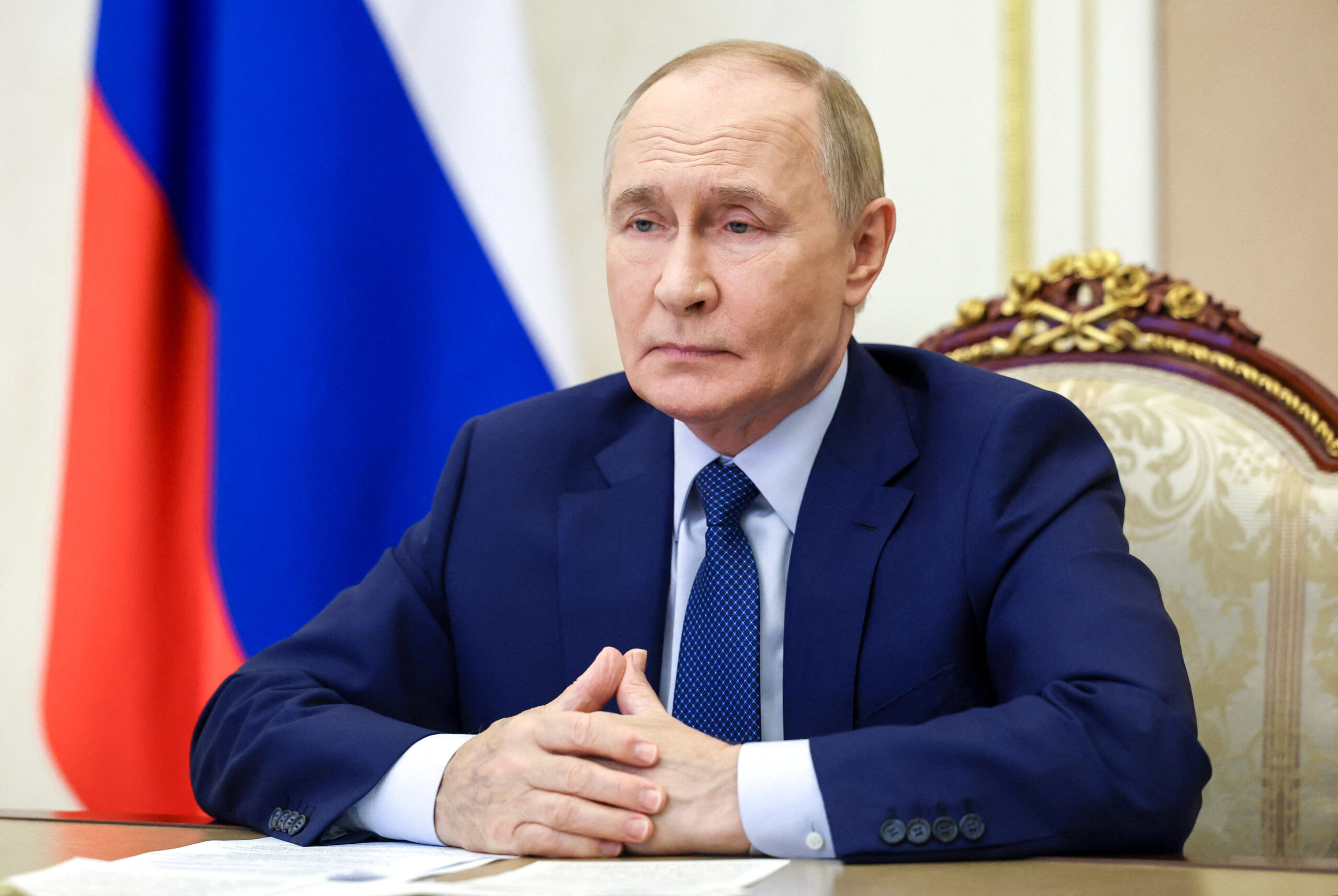Russian incursions into NATO airspace have become alarmingly commonplace in recent weeks as Vladimir Putin escalates his shadow war against the West. The first clear signal of an upturn in hostile Kremlin activity came in early September when a wave of Russian drones crossed the border into Poland, sparking an armed response from NATO jets. Days later, three Russian fighters violated Estonian airspace. More recently, suspected Russian drones have forced shutdowns at international airports in a number of European countries including Denmark, Norway, Germany, and the Netherlands.
These incursions are far from unprecedented. Ever since Russia’s invasion of Ukraine began more than a decade ago, the Kremlin has been engaged in a campaign of gray zone aggression throughout the democratic world involving everything from social media disinformation and cyberattacks to infrastructure sabotage and assassinations. Nevertheless, the sharp rise in high-profile incidents over the past month suggests we may now be entering a dangerous new phase.
What is Russia’s objective? Many have speculated that the Kremlin may be seeking to test NATO and assess how well the alliance is adapting to the rapidly changing military realities of drone warfare. This is a reasonable assumption. It is certainly true that each new Russian provocation has yielded a treasure trove of useful intelligence on the current state of Europe’s defenses.
At the same time, it is difficult to believe that Putin is in a position to dramatically expand the current war. The Kremlin dictator has committed the vast majority of Russia’s available military potential to the invasion of Ukraine, leaving him too overstretched to intervene elsewhere on behalf of Russian allies in Armenia, Syria, and Iran. A Russian attack on NATO therefore looks unlikely, at least for now. Instead, the recent surge in Russian hybrid warfare activities is primarily an attempt to intimidate Europe and deter further support for Ukraine.
Putin has long been recognized for his skill in the dark arts of international intimidation. This reputation has been significantly enhanced by the success of his scare tactics during the full-scale invasion of Ukraine. Indeed, while Putin’s armies have struggled to live up to expectations on the battlefield, his ability to intimidate his Western adversaries has been arguably the Russian leader’s single greatest achievement of the entire war.
Since the initial hours of the invasion, Putin has used a combination of thinly-veiled threats and nuclear saber-rattling to browbeat the West and isolate Ukraine. Like a geopolitical gangster, he has repeatedly intimidated Europeans with the prospect of shattering their peaceful existence if they dare to interfere in his criminal affairs. While he has typically steered clear of direct ultimatums, the underlying message behind Putin’s many menacing statements has been unmistakable: “Nice countries you have there. It would be a shame if something happened to them.”
This strategy has proved remarkably effective. While Western governments have condemned Russia’s “irresponsible” use of nuclear rhetoric and have publicly insisted that they will not be bullied by the Kremlin, there can be no serious debate that Putin’s threats have had the desired effect. His intimidation tactics have been fundamental in shaping the overly cautious international response to Russia’s invasion, which has been consistently characterized by an excessive emphasis on avoiding escalation.
The Kremlin dictator is now looking to employ the same approach as he seeks to exploit Europe’s growing sense of insecurity. Putin is well aware that European leaders have been unnerved by US President Donald Trump’s mixed messaging on NATO and his plans to reduce America’s involvement in the defense of Europe. For Moscow, this presents an inviting opportunity. By engaging in increasingly open acts of aggression across Europe, Putin is sending a signal to European capitals that they are all alone against a resurgent Russia and can no longer count on the reassuring presence of the United States.
Earlier this week, former Russian President Dmitry Medvedev provided the most explicit indication yet that the recent spike in Russian gray zone operations is aimed at intimidating Europeans. While refusing to accept responsibility for the sharp rise in disruptive drone activity, Medvedev noted with satisfaction that the “drone epidemic” was causing widespread panic and could persuade Europeans to turn away from Ukraine. “The main thing is for narrow-minded Europeans to experience the dangers of war for themselves. To tremble like dumb animals in a herd being driven to the slaughter. To soil themselves with fear, anticipating their imminent and painful end,” he commented in typically understated fashion.
Eurasia Center events

Putin is clearly hoping his drone diplomacy will spread a sense of alarm across Europe and encourage the continent’s leaders to abandon Ukraine. Desired initial outcomes include a reduction in European military aid for Kyiv and the redirection of existing resources away from Ukraine in order to bolster defenses closer to home. By exposing Europe’s vulnerability to Russian attack, Moscow may also be able to undermine the prospects of a unified European defense policy and strengthen support for Kremlin-friendly political parties advocating appeasement toward Russia.
This strategy is not without risk, of course. Some in Europe, particularly those with firsthand experience of Russian imperialism, are pushing hard for comprehensive countermeasures to Putin’s recent provocations that will underline the continent’s commitment to defending itself. Many remain unconvinced that Europe will rise to the challenge, however. The Kremlin certainly appears confident that the current rhetoric in European capitals will ultimately result in little concrete action.
This apparent lack of concern in Moscow should come as no surprise. After all, Putin has been betting on Western weakness for over two decades. Ever since he first embarked on an expansionist foreign policy with the 2008 invasion of Georgia, Putin has been counting on the democratic world’s deep reluctance to risk a direct military confrontation with the Kremlin. So far, his low opinion of the West has proved more than justified.
Putin’s invasion has not gone according to plan but he still firmly believes he can win the war by outlasting the West and overwhelming Ukraine. He has recently been encouraged by Trump’s efforts to downgrade US involvement, and now views Europe as the last remaining obstacle to Russian victory. It is therefore safe to assume that the Kremlin’s campaign of gray zone aggression will continue to gain momentum as Putin seeks to cow Europe and isolate Kyiv. The Russian leader thinks his enemies are weak and can be easily intimidated. Until he is proved wrong, the cost of stopping him will only rise.
Peter Dickinson is editor of the ’s UkraineAlert service.
The views expressed in UkraineAlert are solely those of the authors and do not necessarily reflect the views of the , its staff, or its supporters.

The Eurasia Center’s mission is to enhance transatlantic cooperation in promoting stability, democratic values, and prosperity in Eurasia, from Eastern Europe and Turkey in the West to the Caucasus, Russia, and Central Asia in the East.
Image: Russian President Vladimir Putin attends opening ceremonies for new Federal Service for the Oversight of Consumer Protection and Welfare (Rospotrebnadzor) facilities across Russia via video link at the Kremlin, in Moscow, Russia September 15, 2025. (Sputnik/Vyacheslav Prokofyev/Pool via REUTERS)








